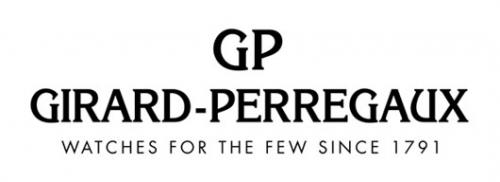Friday 22 April, 2011 - 11:30 AM EDT
Girard-Perregauxs History.

Girard-Perregaux dates from 1791 and from that time has always expressed the combination of the two qualities that have most contributed to its success: technical skill and commercial instinct. Among the most exceptional watches under the Company’s name is the Tourbillon Three Gold Bridges, awarded the Gold Medal at the World’s Fair in Paris in 1867 and in 1889. The Company has become internationally known only fairly recently, and owes its rapid expansion to its own interpretation of “global manufacturing”, that is, the real production capacity to move from making single components and all kinds of movements to the design and realization of exclusive, top quality pieces.
1966 - Girard-Perregaux designs and creates the first high frequency mechanical movement (36,000 A/h) on the base of a 1957 calibre. This is the Gyromatic H.F. calibre 16611.
1967 fully 73% of the chronometers certified by the Neuchâtel Observatory were Gyromatic H.F. 1968 - The Swiss industry is astounded by the potential of quartz: many of the old Houses step back from the new invention, but not Girard-Perregaux. It is the first to start industrial mass production of a Swiss made quartz model. Its oscillator frequency (32,768 Hertz) will subsequently be adopted as a world wide standard.
1987 - The GP 7000 is shown, a chronograph that is to become a great classic of contemporary sports watches and that will encourage the House to develop bonds with the sporting world of great competitions.
1991 - Influenced by the surge of revivals of the great complications of the past, Girard Perregaux presents a re-edition of the Tourbillon Three Bridges as a wristwatch at the Basel exhibition. This model is an indication of the ability and the ambitions of the Manufacture, which does not hesitate to test itself with an historical product while being attentive to the present and the future markets.
1993 - GP presents its Tribute to Ferrari, a split second automatic chronograph bearing the symbol known throughout the world: the rearing horse on a red ground, the Maranello flag. This was the start of an important association for the Swiss Company. The “pour Ferrari” group of watches will become a collection, in fact, enlarged year after year for a public devoted to its clean lines and elite and technological characteristics.
1994 - The capacity to make its own movements is an important and fundamental objective for all watchmaking companies. This year the movements GP 3000 and GP 3100 are introduced and will shortly equip all the House watches.
1995 - The collection “Laureato” is created, the first Girard-Perregaux “integrated” watch. The Company banks on this model that is characterized by an octagonal bezel and a decidedly sporting look. The chronograph version is chosen, in 1996 for the limited number edition of 999 pieces that the Manufacture has dedicated to each Olympic year since the turn of the last century.
1996 - Presentation of F50, an even stronger Ferrari link. Inspired by one of the most famous cars in the history of automobile racing, the chrono perpetual celebrates the 50th anniversary of the Maranello company and its own 205th anniversary. The new complication is a split second chrono with tourbillon and minute repeater. Two more models are added to the Vintage collection: the split second automatic chronograph, with a softened squared case, and the refined ladies model called Vintage Baguette. The new little automatic alarm calibre 2291 with a second time zone is mounted on Traveler II.
1998 - Girard Perregaux is recognizably among the most active companies in the field of quality watchmaking. Its new star is the Petit Tourbillon for which the GP craftsmen succeeded in miniaturizing the famous “Tourbillon Three Gold Bridges” movement in a 31 mm diameter case without distorting its technical characteristics. The ladies versions of Laureato and Vintage, dedicated to the alchemy of gold and diamonds, are greatly admired; the Lady “F”, sports models dedicated to women and the Ferrari legend, are a natural development of the men’s versions. Significant space is also given to the men’s collections of the latest trends - like the Vintage 1945, “clothed” in fabulous cashmere and tasmanian wool from the Lanificio Loro Piana. The new “pour Ferrari” chronograph, the 250 TR, is dedicated to the Testa Rossa, whose silhouette is engraved on the back case. This, “three counters” model, with respect to the others, has a small section on the dial for the 24 hour counter in place of the traditional minute counter whose hand, in this instance, is next to the second counter.
This post has 0 comments. Read or post comments.
 sales@interwatches.com
sales@interwatches.com





 March 2011
March 2011 
Comments
No comments available.